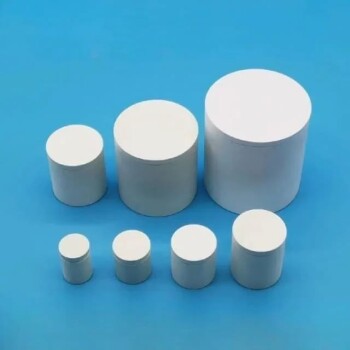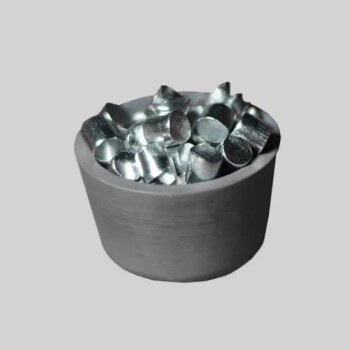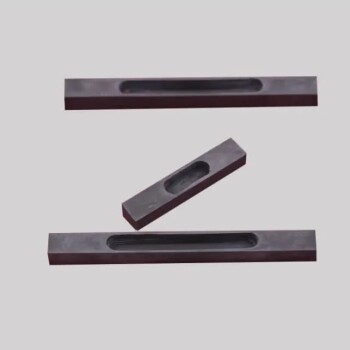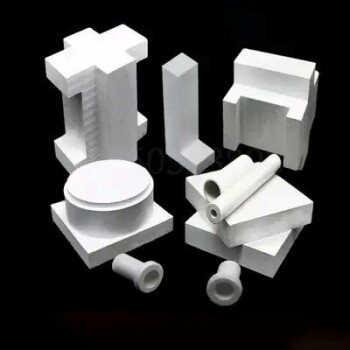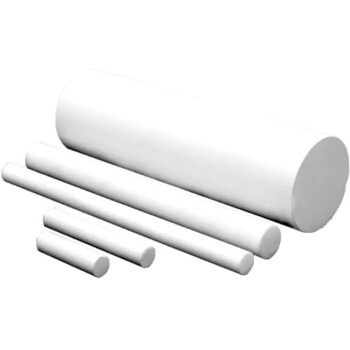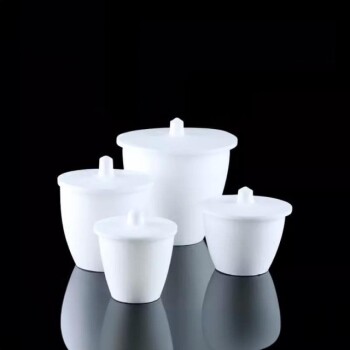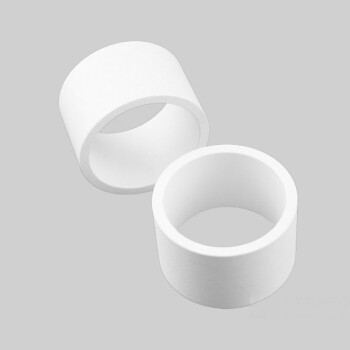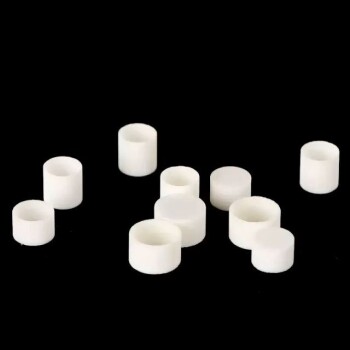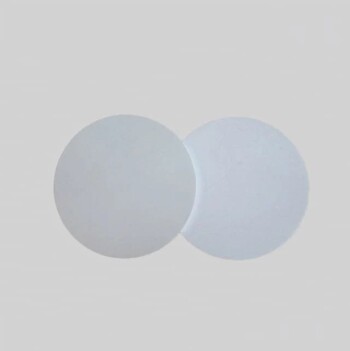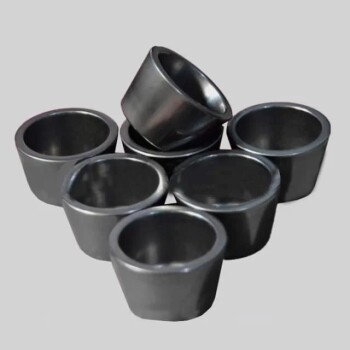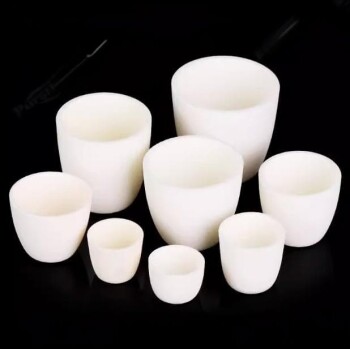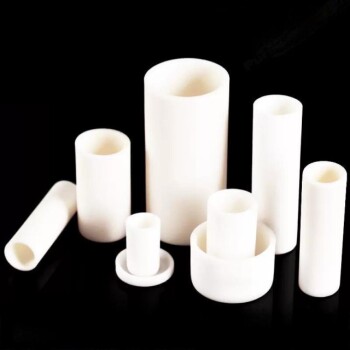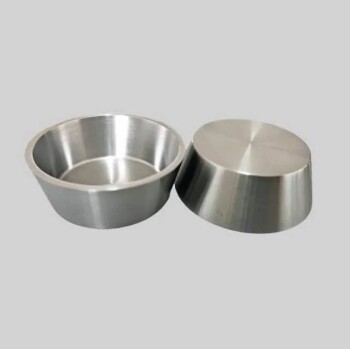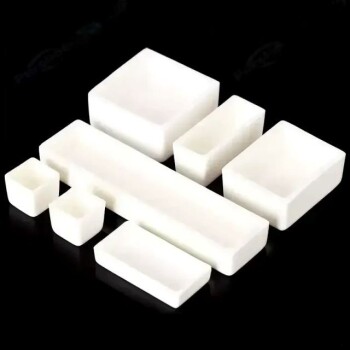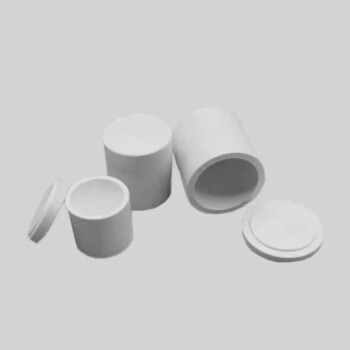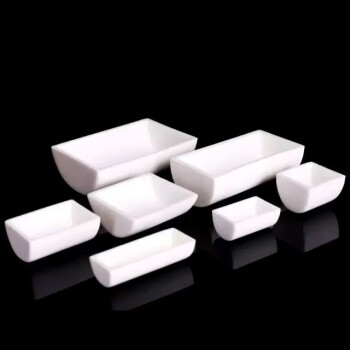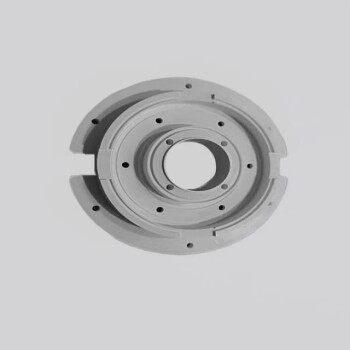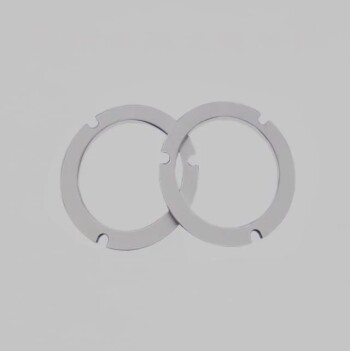Introduction to Pyrolytic Crucibles
Chemical Vapor Deposition (CVD) Process
Chemical Vapor Deposition (CVD) is a sophisticated vacuum deposition method employed to create high-quality, high-performance solid materials. This process is pivotal in the semiconductor industry for producing thin films and is widely used in microfabrication for depositing a variety of materials in different forms, including monocrystalline, polycrystalline, amorphous, and epitaxial structures.
The CVD process can be broadly divided into three key stages:
-
Formation of Volatile Precursors: The process begins with the creation of volatile substances, typically through the introduction of one or more gaseous precursors. These precursors are chosen based on their ability to react and decompose to form the desired solid deposit.
-
Transfer to Deposition Area: Once formed, these volatile precursors are transported to the deposition area, usually a substrate or a wafer, through controlled gas flow. The transfer ensures that the precursors are evenly distributed across the surface to be coated.
-
Chemical Reactions and Solid Deposition: Upon reaching the substrate, the precursors undergo chemical reactions, either through thermal decomposition or through catalytic reactions on the substrate surface. These reactions result in the formation of a solid deposit, while any volatile by-products are removed from the reaction chamber, ensuring the purity and quality of the final deposit.
CVD is practiced in various formats, including hot-wall thermal CVD and plasma-assisted CVD, each differing in how chemical reactions are initiated. The versatility of CVD allows for the deposition of a wide range of materials, such as silicon, carbon-based materials, tungsten, titanium nitride, and various high-κ dielectrics, making it an indispensable technique in advanced material science and engineering.
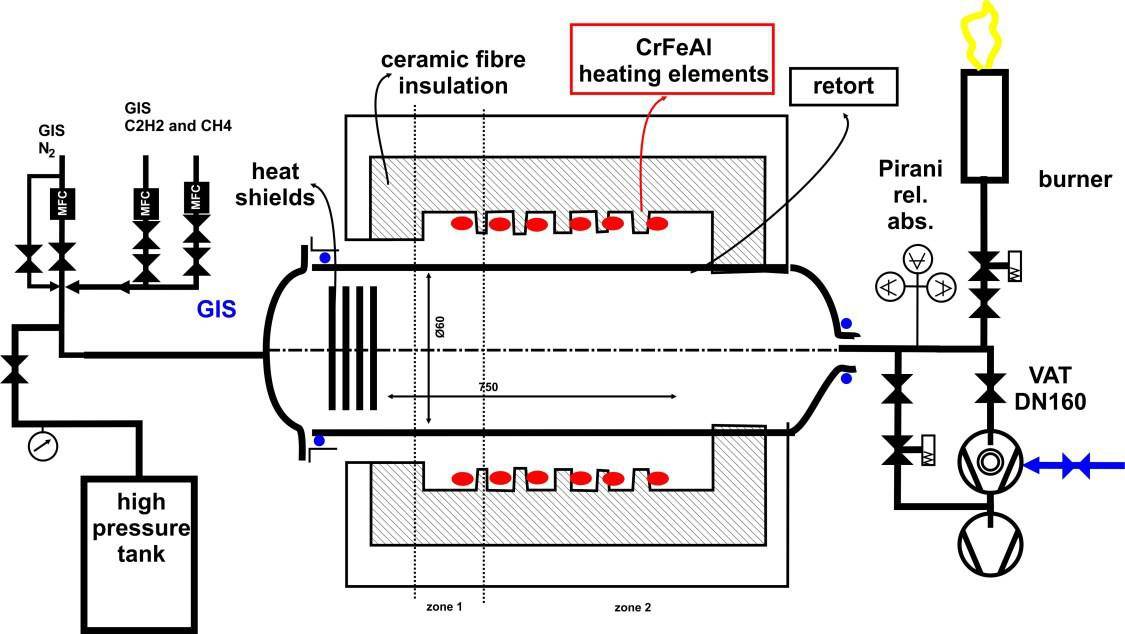
Common Performance Characteristics
Both pyrolytic graphite and pyrolytic boron nitride crucibles exhibit a set of common performance characteristics that make them highly desirable in various high-temperature applications. These crucibles are renowned for their high-temperature resistance, enabling them to withstand extreme conditions without compromising their structural integrity. This attribute is particularly crucial in processes such as chemical vapor deposition (CVD) and high-purity metal oxide preparation, where temperatures often exceed 1000°C.
In addition to their thermal stability, these crucibles also offer exceptional abrasion resistance. This means they can endure mechanical wear and tear during repeated use, maintaining their shape and functionality over time. This durability is a key factor in their longevity and cost-effectiveness, as it reduces the need for frequent replacements.
Another shared characteristic is their purity. Both materials are produced through meticulous chemical vapor deposition processes, resulting in crucibles with minimal impurities. This high purity is essential for applications requiring uncontaminated environments, such as the growth of high-quality semiconductor crystals and the preparation of analytical samples for mineral raw materials.
| Characteristic | Pyrolytic Graphite | Pyrolytic Boron Nitride |
|---|---|---|
| High-Temperature Resistance | Excellent | Excellent |
| Abrasion Resistance | High | High |
| Purity | Very High | Very High |
These common performance characteristics underscore the versatility and reliability of both pyrolytic graphite and pyrolytic boron nitride crucibles, positioning them as top choices in advanced material processing and scientific research.
Pyrolytic Graphite (PG) Crucible
Preparation Process
The preparation of a graphite crucible involves a sophisticated process known as chemical vapor deposition (CVD), which is meticulously carried out under high temperature, low pressure, and a nitrogen atmosphere. This process begins with the cracking of hydrocarbons, leading to the directional deposition of carbon atoms onto a model. This model serves as the template upon which the carbon atoms are meticulously arranged, forming a highly ordered structure.
Once the deposition is complete, the crucible undergoes a cooling phase, during which the carbon atoms solidify into the desired shape. Post-cooling, the crucible is carefully demolded, revealing a smooth, dense surface with low permeability and high purity. This method ensures that the final product is not only structurally robust but also possesses excellent resistance to high temperatures and chemical corrosion.
The CVD process can be broken down into three primary steps:
- Formation of Volatile Substances: Hydrocarbons are introduced into the reaction chamber and subjected to high temperatures, causing them to break down into volatile substances.
- Transfer to Deposition Area: These volatile substances are then transported to the deposition area, where the model is positioned.
- Chemical Reactions: Upon reaching the model, the volatile substances undergo chemical reactions, resulting in the directional deposition of carbon atoms.
This intricate process not only ensures the formation of a high-quality high purity graphite crucible but also sets the stage for its numerous applications in advanced material preparation and analysis.
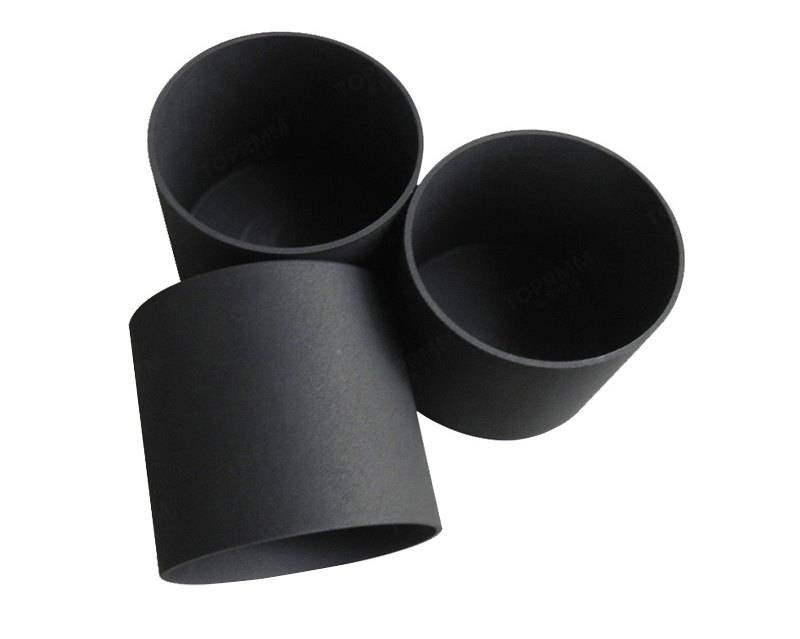
Main Features
Pyrolytic graphite crucibles boast a range of distinctive features that make them highly suitable for specialized applications. High temperature resistance is one of their most notable attributes, allowing them to withstand extreme temperatures up to 700°C without compromising their structural integrity. This makes them ideal for processes that require prolonged exposure to high heat.
In addition to their thermal endurance, these crucibles exhibit resistance to acid and alkali chemical corrosion at elevated temperatures. This chemical stability ensures that the crucibles remain functional and retain their purity even when exposed to corrosive substances, making them invaluable in environments where chemical reactivity is a concern.
The smooth, dense surface of pyrolytic graphite crucibles contributes to their low permeability, which is crucial for maintaining the integrity of the materials being processed. This surface characteristic also facilitates easy cleaning and maintenance, reducing downtime and operational costs.
Finally, the high purity of these crucibles is a key feature that aligns with stringent quality standards in various industries. This purity is maintained throughout the crucible's lifecycle, ensuring that the materials processed within them remain uncontaminated, which is particularly important in the production of high-purity metal oxides and other critical substances.
Applications
Pyrolytic graphite (PG) crucibles are indispensable tools in various advanced material preparation processes. They are predominantly employed in the synthesis of high-purity metal oxides, where their high temperature resistance and chemical inertness ensure the integrity and purity of the final product. Additionally, PG crucibles are utilized in ion coating applications, contributing to the uniform deposition of thin films on substrates, which is crucial for enhancing surface properties in electronics and optics.
In the realm of analytical chemistry, PG crucibles serve as analytical vessels for a diverse array of materials. This includes mineral raw materials, construction materials, high-purity substances, and even grain and feed samples. Their smooth, dense surface and low permeability make them ideal for maintaining the integrity of samples during high-temperature analyses. The table below highlights some of the key applications of PG crucibles in different industries:
| Industry | Application |
|---|---|
| Materials Science | Preparation of high-purity metal oxides |
| Electronics | Ion coating for thin film deposition |
| Analytical Chemistry | Analytical vessels for mineral raw materials, construction materials, high purity materials, grain and feed samples |
These applications underscore the versatility and critical role of PG crucibles in ensuring the quality and consistency of materials across various scientific and industrial domains.
Pyrolytic Boron Nitride (PBN) Crucible
Preparation Process
The preparation of a boron nitride crucible involves a sophisticated chemical vapor deposition (CVD) process under stringent vacuum conditions. Initially, a mixture of boron-containing gas compounds and nitrogen-containing gases is introduced into the reaction chamber. These gases undergo a series of complex chemical reactions, leading to the formation of a pre-coating layer on the substrate. This pre-coating serves as the foundational layer for the crucible's structure.
Once the pre-coating is established, the reaction chamber maintains a constant temperature, typically in the range of 1800°C to 2000°C. At these elevated temperatures, the chemical reactions continue to progress, allowing the pre-coating to densify and form the crucible's final structure. This phase is critical as it ensures the uniformity and integrity of the crucible, which are essential for its performance characteristics.
The entire process is conducted under vacuum to eliminate any potential contaminants and to facilitate the precise control of the chemical reactions. This meticulous control over the environment and reaction conditions results in a crucible with exceptional chemical and thermal stability, high densification, and reusability. The anisotropy in mechanical, thermal, and electrical properties further enhances its suitability for advanced material preparation processes, such as evaporation, molecular beam epitaxy, and the growth of high-quality single crystals.
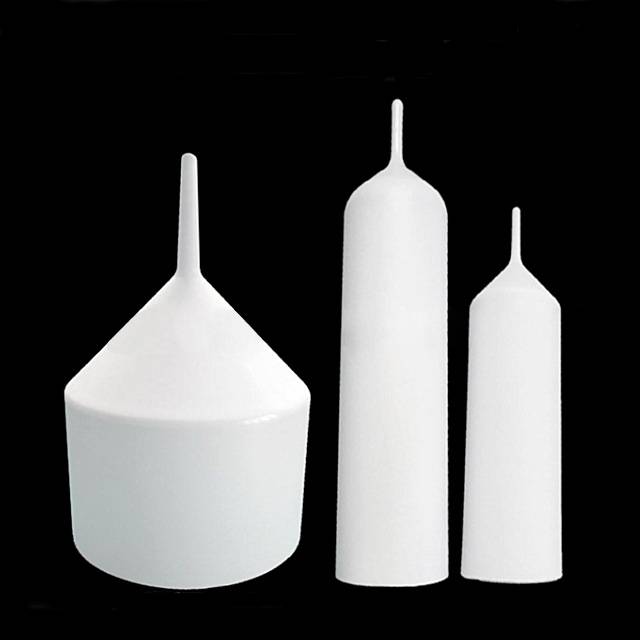
Main Features
Pyrolytic Boron Nitride (PBN) crucibles boast an array of advanced features that set them apart in high-temperature and chemically demanding applications. One of their most notable attributes is excellent chemical and thermal stability. This stability ensures that the crucibles maintain their structural integrity and chemical inertness even under extreme conditions, making them ideal for processes that require prolonged exposure to high temperatures and corrosive environments.
High densification is another key feature, providing these crucibles with a dense and uniform microstructure. This densification not only enhances their mechanical strength but also significantly reduces porosity, thereby minimizing the risk of contamination from external sources. The reusability of PBN crucibles further underscores their cost-effectiveness and environmental sustainability, as they can be used multiple times without compromising their performance.
The anisotropy in mechanical, thermal, and electrical properties is a unique characteristic that allows PBN crucibles to exhibit different properties depending on the direction of measurement. This anisotropy is particularly beneficial in applications where directional control over thermal conductivity or electrical resistance is crucial. For instance, in the growth of high-quality single crystals, this anisotropy can be harnessed to optimize the crystal growth process.
Lastly, PBN crucibles offer good insulation properties at high temperatures. This feature ensures that the heat generated during high-temperature processes is contained within the crucible, preventing thermal loss and maintaining a consistent temperature environment. This is especially important in applications like molecular beam epitaxy and liquid phase epitaxy, where precise temperature control is essential for the quality of the final product.
| Feature | Description |
|---|---|
| Chemical and Thermal Stability | Maintains structural integrity and chemical inertness under extreme conditions. |
| High Densification | Dense and uniform microstructure, enhances mechanical strength and reduces porosity. |
| Reusability | Can be used multiple times without compromising performance. |
| Anisotropy | Different properties depending on the direction of measurement, beneficial in directional control applications. |
| High-Temperature Insulation | Contains heat within the crucible, maintaining consistent temperature environments. |
Applications
Pyrolytic boron nitride (PBN) crucibles find extensive applications across various high-precision and high-tech industries. One of their primary uses is in evaporation processes, where they facilitate the deposition of thin films with exceptional uniformity and quality. This is particularly crucial in the semiconductor industry, where the integrity of the film can significantly impact device performance.
In the realm of molecular beam epitaxy (MBE), PBN crucibles play a pivotal role in the growth of ultra-pure single crystals. The controlled environment provided by these crucibles ensures that the crystals develop with minimal defects, which is essential for their electronic and optical properties. This application is particularly significant in the fabrication of advanced electronic devices and optoelectronic components.
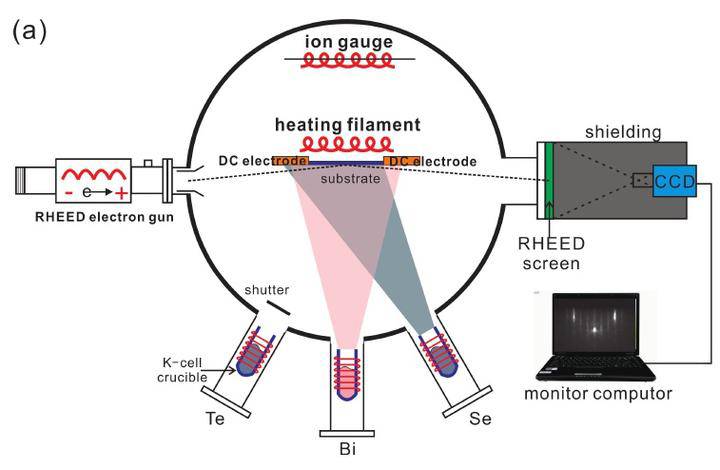
Liquid phase epitaxy (LPE) is another area where PBN crucibles excel. They are used to grow high-quality semiconductor layers by slowly cooling a saturated solution, a process that requires precise temperature control and chemical stability. The inert nature of PBN crucibles prevents any contamination, ensuring the purity of the epitaxial layers.
For the preparation of gallium arsenide (GaAs) single crystals, PBN crucibles offer the necessary thermal and chemical stability. GaAs is a key material in the production of high-efficiency solar cells and high-speed electronic devices. The use of PBN crucibles in this process guarantees the homogeneity and purity of the GaAs crystals, which are critical for their performance.
Additionally, PBN crucibles are indispensable in the growth of high-quality CdZnTe (CZT) single crystals. These crystals are used in infrared detectors and nuclear radiation detectors, where their ability to handle high radiation doses without degradation is paramount. The controlled growth environment provided by PBN crucibles ensures that the CZT crystals meet the stringent purity and structural requirements necessary for these sensitive applications.
| Application | Industry | Key Benefits |
|---|---|---|
| Evaporation | Semiconductor | Uniform thin film deposition |
| Molecular Beam Epitaxy (MBE) | Electronics & Optoelectronics | High-purity single crystal growth with minimal defects |
| Liquid Phase Epitaxy (LPE) | Semiconductor | Precise temperature control for high-quality epitaxial layer growth |
| GaAs Single Crystal Prep. | Electronics | Thermal and chemical stability for homogeneous and pure GaAs crystals |
| CdZnTe Single Crystal Growth | Infrared & Nuclear Radiation Detectors | Controlled environment for high-purity, structurally sound CZT crystals |
Summary and Comparison
Unique Properties and Applications
Pyrolytic graphite crucibles exhibit a low ablation rate and exceptional resistance to both acid and alkali chemical corrosion, which makes them ideal for high-temperature applications where material integrity is paramount. This property is particularly advantageous in the preparation of high-purity metal oxides and analytical vessels for various materials, ensuring that the integrity of the sample is maintained throughout the process.
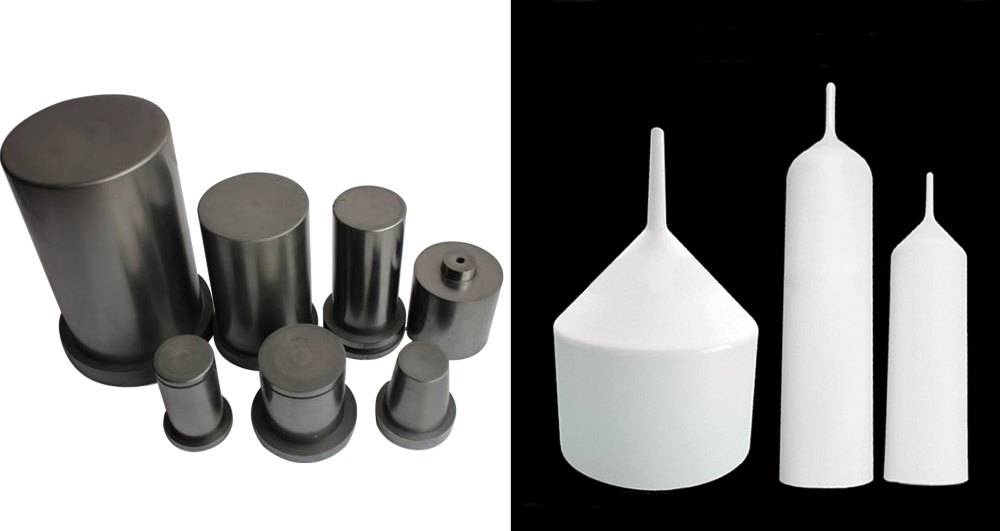
On the other hand, pyrolytic boron nitride (PBN) crucibles boast high chemical purity, excellent thermal conductivity, and superior insulation properties, coupled with a distinct anisotropy in their mechanical, thermal, and electrical properties. This anisotropy allows PBN crucibles to be tailored for specific applications such as evaporation, molecular beam epitaxy, and the growth of high-quality single crystals, including those used in infrared detectors and nuclear radiation detectors. The reusability of PBN crucibles further enhances their value in these cutting-edge material preparation processes.
| Property | Pyrolytic Graphite Crucible | Pyrolytic Boron Nitride Crucible |
|---|---|---|
| Ablation Rate | Low | N/A |
| Chemical Resistance | High (acid and alkali) | High (general) |
| Chemical Purity | High | Very High |
| Thermal Conductivity | High | Excellent |
| Insulation | Good | Superior |
| Anisotropy | None | Obvious |
| Applications | High-purity metal oxides, analytical vessels | Evaporation, MBE, single crystal growth |
The unique properties of these crucibles make them indispensable in different high-tech industries, each catering to specific needs that require precision and reliability in material preparation.
Related Products
- Boron Nitride (BN) Crucible for Phosphorous Powder Sintered
- Electron Beam Evaporation Coating Conductive Boron Nitride Crucible BN Crucible
- High Purity Pure Graphite Crucible for Evaporation
- Advanced Engineering Fine Ceramics Boron Nitride (BN) Ceramic Parts
- Boron Nitride (BN) Ceramic Rod for High Temperature Applications
Related Articles
- The Role and Types of Crucibles in Scientific Experiments
- Guidelines for the Use of Boron Nitride Crucibles
- Comprehensive Guide to Spark Plasma Sintering Furnaces: Applications, Features, and Benefits
- Applications and Importance of Hydraulic Press in Laboratories
- High Purity Graphite Crucible: Features, Production, and Usage

